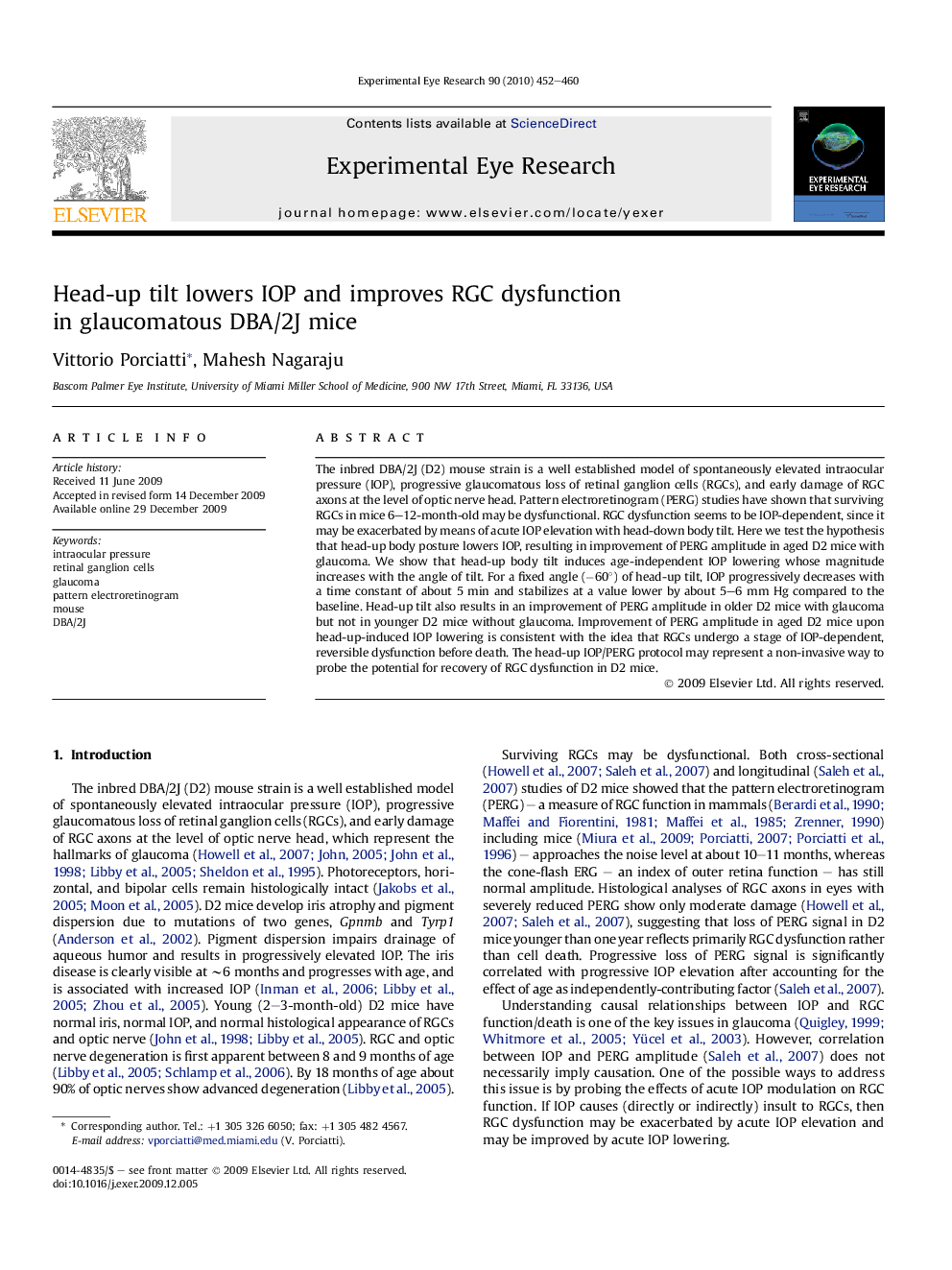| Article ID | Journal | Published Year | Pages | File Type |
|---|---|---|---|---|
| 4011856 | Experimental Eye Research | 2010 | 9 Pages |
The inbred DBA/2J (D2) mouse strain is a well established model of spontaneously elevated intraocular pressure (IOP), progressive glaucomatous loss of retinal ganglion cells (RGCs), and early damage of RGC axons at the level of optic nerve head. Pattern electroretinogram (PERG) studies have shown that surviving RGCs in mice 6–12-month-old may be dysfunctional. RGC dysfunction seems to be IOP-dependent, since it may be exacerbated by means of acute IOP elevation with head-down body tilt. Here we test the hypothesis that head-up body posture lowers IOP, resulting in improvement of PERG amplitude in aged D2 mice with glaucoma. We show that head-up body tilt induces age-independent IOP lowering whose magnitude increases with the angle of tilt. For a fixed angle (−60°) of head-up tilt, IOP progressively decreases with a time constant of about 5 min and stabilizes at a value lower by about 5–6 mm Hg compared to the baseline. Head-up tilt also results in an improvement of PERG amplitude in older D2 mice with glaucoma but not in younger D2 mice without glaucoma. Improvement of PERG amplitude in aged D2 mice upon head-up-induced IOP lowering is consistent with the idea that RGCs undergo a stage of IOP-dependent, reversible dysfunction before death. The head-up IOP/PERG protocol may represent a non-invasive way to probe the potential for recovery of RGC dysfunction in D2 mice.
